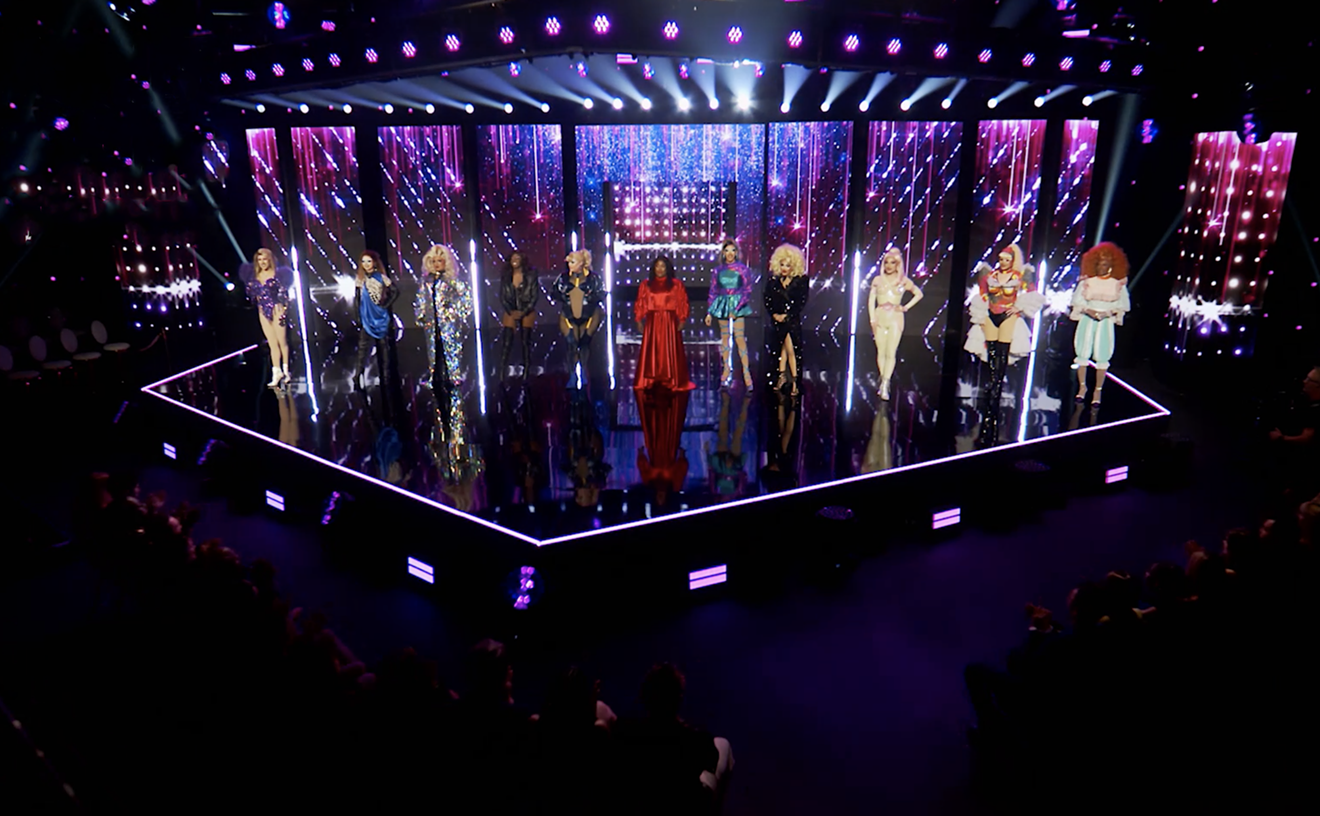The new space on North Miami Avenue and 34th Street is close enough to Bernice Steinbaum Gallery to hit it with a rock. Some time ago I said that ten more galleries doing what Locust Projects does -- curating shows based on taste rather than sales (even if it's not my taste) -- would revolutionize Miami's art scene. If concentrated here, I would reduce that number to five. The makings of a North Miami Avenue art corridor are in place: Steinbaum Gallery at 36th Street, Rocket at 34th, Dorsch Gallery at 24th, and Locust Projects at 23rd -- all spaces that have been (or promise to be) resistant to showing pap. At 29th Street is Slak Lounge, placed in the middle with mathematical precision for convenient heel-cooling. Across the street, the cargo container graveyard is being cleared for an Ikea, a Target, and a few thousand condo units.
Actually the conditions are ripe for the Lincoln Road Effect: Artists and galleries rent cheap real estate; the art attracts restaurants and people who want to live near where "things" are "happening"; the restaurants and people become numerous enough to support each other's presence without the art; rents go through the roof; the artists and galleries are forced out to seek new cheap spaces to rent; and the cycle begins anew. But Dorsch and Steinbaum own their buildings, so they're way ahead of the game. That would be great -- desirable condos opposite some established, tough-minded galleries. A lot of decent art could get sold that way.
As for Rocket Projects, it has a handsome space, a fireball curator, and a little sitting area with orchids, flat files full of art, a few books, and a video monitor. The idea is that you can come, hang out, look at works on paper, take in an art film, and chill. The attitude is positive, the space attractive, the people hip.
So, how's the work?
The work is showing glaring signs of immaturity, excessive self-congratulation, cleverness that outstrips skill, and concepts pursued past the point of interest. There's life to be found, but there's a lot of cleaning up to do. The situation in the neighborhood and the gallery is so young and positive that even someone as cynical as I am hesitates to come down on the work. I feel like I'm talking about death at a four-year-old's birthday party. But the job needs doing. Think of me as a moyel snipping the foreskin of misplaced ambitions off the newborn scene. It'll be a mitzvah. The pain will be slight. Trust me.
In the front room is "Customized," a show themed around the rebuilt environment; building construction materials abound and the dominant color is gray. The best piece is by Daniel Arsham, who has used the word "regret" as the plan for an architectural model of a dismal, several-story parking garage. It is complete with little working streetlights on top. One realizes after a while that the structure loops around madly without ever providing a place to park. One would want the craftsmanship on something like this to be nearly perfect, and it isn't, but it does pack a creepy wallop. Martin Oppel's cinder blocks made from cast dirt and clear resin traffic cone are interesting, and would be more so if the idea was expanded somehow. There is an accompanying painting of a construction-site landscape. The banality of the subject is overrun by the banality of the technique, the latter negating the poignancy of the former.
David Rohn's drawings using a Dremel tool on cinder blocks, which are then placed in a cart, on a bridge, and on a ladder made with two-by-fours, suffer from similar problems. The drawings themselves are fine, but the cinder blocks seem extraneous and the wood constructions holding them up would be more convincing if they were better crafted.
George Sanchez's Everything I Ever Wanted: Personified in an Image, Pertaining to a Lifestyle that is Not Exclusive to That of an Artist consists of an image burned on a CD that you can buy for $5000 and print out in any way you like. In the gallery, it has been done up as a giant Xerox. Across the street it has been turned into a billboard. It's a picture of a yacht. Whatever conclusions I am supposed to come to about it, neither the idea nor the execution entices me to draw them.
The project room has an installation by Jason Ferguson, Christian Curiel, and Brandon Opalka, who collaborate under the name FeCuOp. The idea behind their Assembly of an Allegory is that they have re-created their studio while referencing some paintings-about-painting by Vermeer and Velázquez, which have been tacked to the walls amid the studio detritus. Two large paintings show the space, and the members of FeCuOp working in it.
Its admirable ambition is undermined by some bothersome points. Although I was promised that the paintings were done by all three artists, they look like Curiel's solo work. There are some good passages of painting in them, except that the figures are wooden -- a continual problem of Curiel's. Either Curiel supplies most of the aesthetic muscle in the group or he has taken on the group's weaknesses. But whatever the case, next to the print of Allegory of the Art of Painting by Vermeer, the whole enterprise seems self-conscious and ham-fisted. This is not true of some little works on paper, done in pencil, paint, and collage, showing the boys working and clicking their beer bottles together in toasts. They are inventive, and they prove that when the trio's skills work with their high spirits they are capable of livelier art.
This may be the message for Rocket Projects in general: find some way to keep the vibe while picking up the standards. The energy is good, and the try-it-and-see-if-it-works attitude is exciting. It's a fine start, but it's only a start, and a little tough love is in order.










